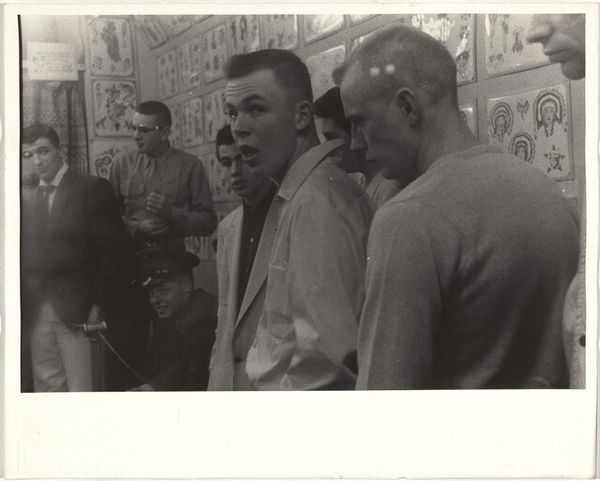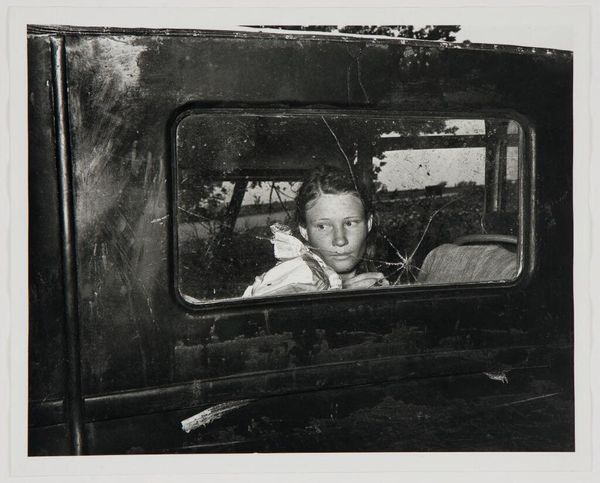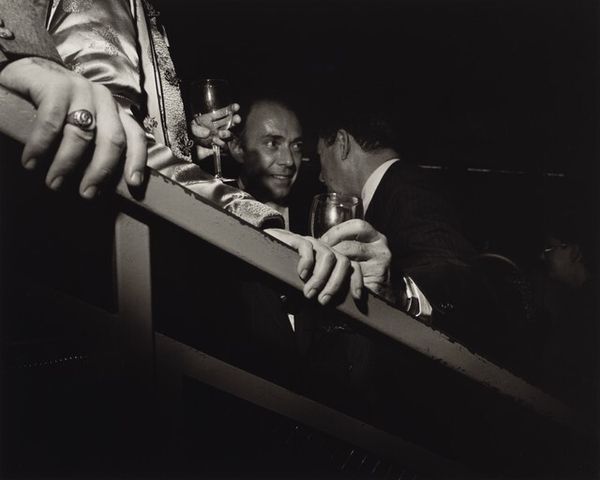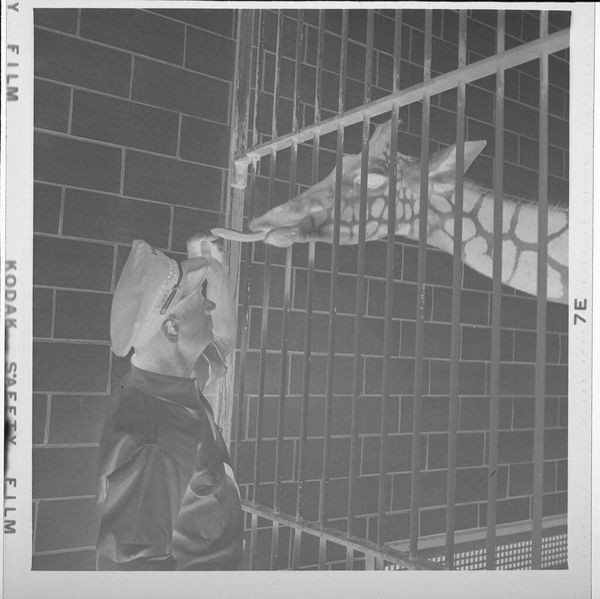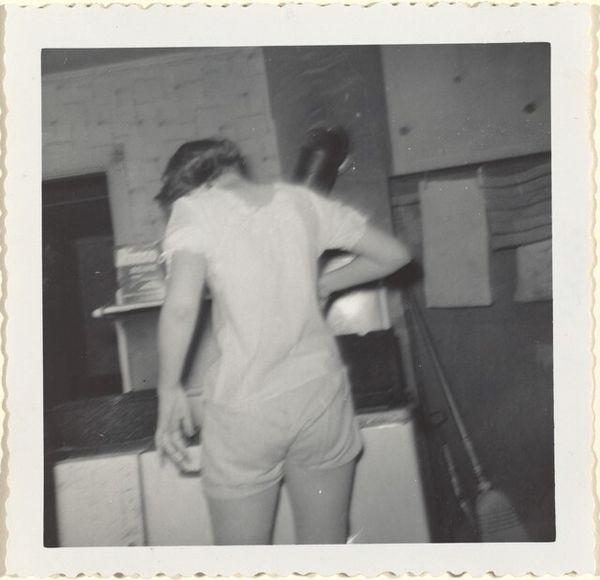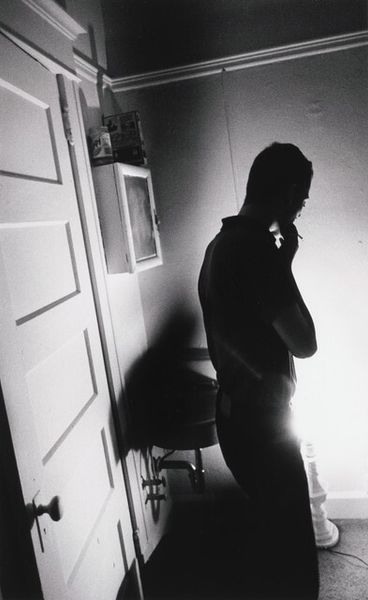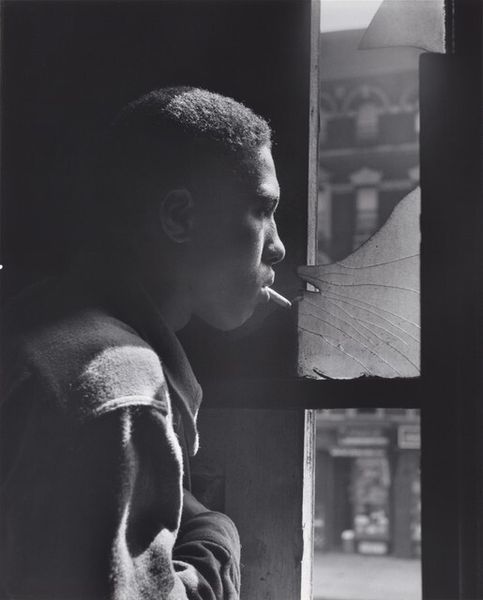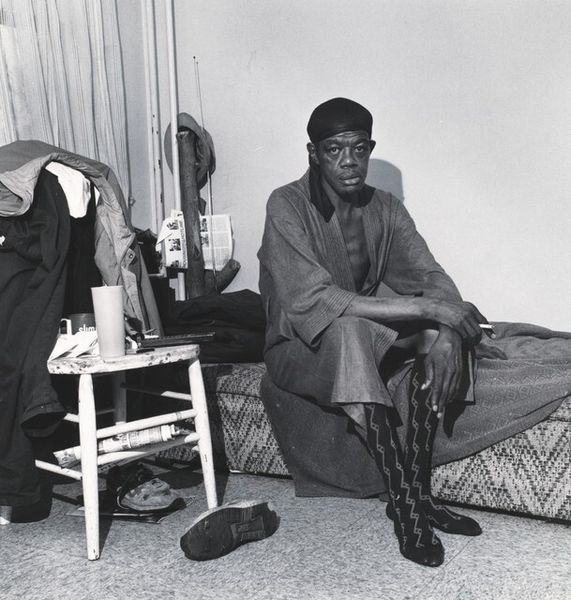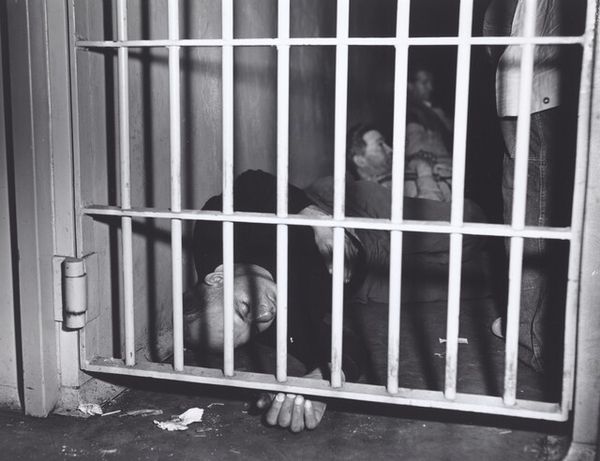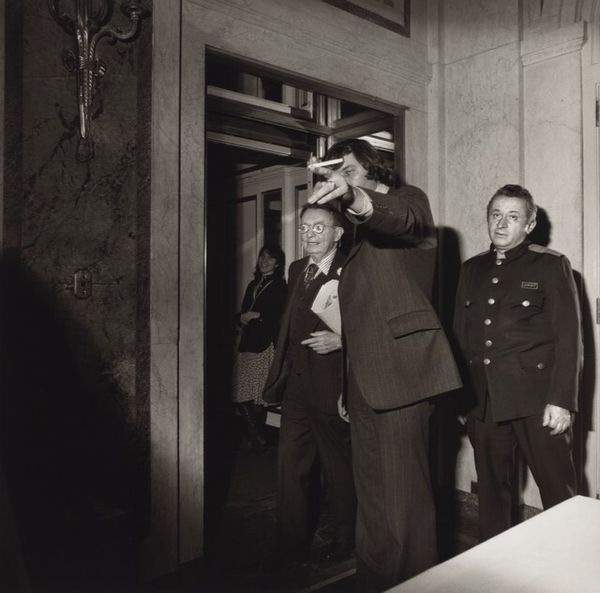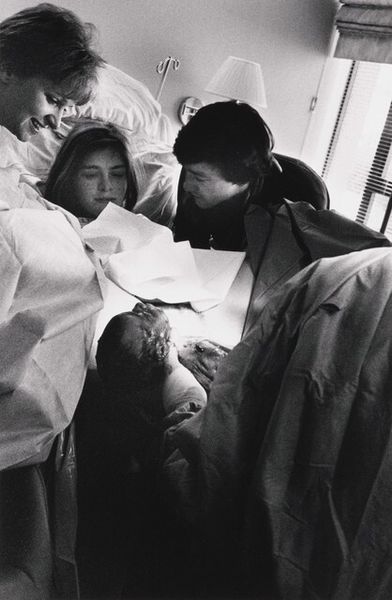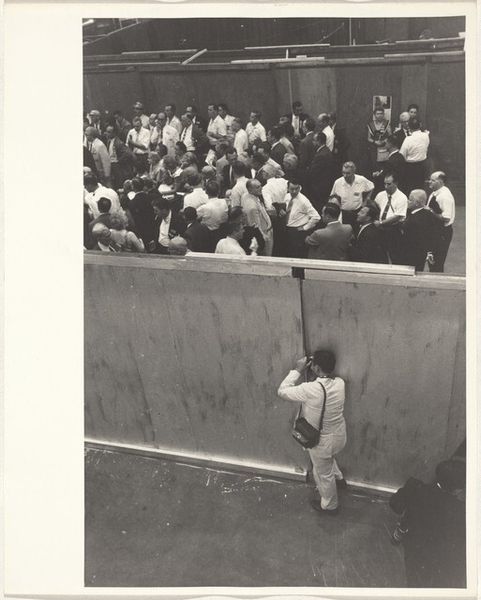
photography, gelatin-silver-print
#
portrait
#
black and white photography
#
street-photography
#
photography
#
black and white
#
gelatin-silver-print
#
monochrome photography
#
ashcan-school
#
monochrome
#
realism
Dimensions: image: 33.8 x 26.1 cm (13 5/16 x 10 1/4 in.) sheet: 35.4 x 27.7 cm (13 15/16 x 10 7/8 in.)
Copyright: National Gallery of Art: CC0 1.0
Curator: So, here we have Weegee's gelatin silver print, "Frank Pape, Arrested for Homicide, November 10," taken sometime between 1944 and 1969. Editor: Woah, okay, my first impression is…uncomfortable. The heavy grate in the foreground immediately creates a sense of confinement and unease. It's almost voyeuristic, like we're peeking into a situation we shouldn't be seeing. Curator: Precisely. Weegee, known for his raw, unfiltered depictions of crime scenes, arrests, and urban life, places us directly into the fraught dynamics of mid-20th century social anxieties. The mesh becomes a physical manifestation of those barriers between society and its alleged transgressors. Editor: Yeah, it really does frame the guy—Pape, I mean—like he’s some sort of animal in a cage. His eyes…they’re vacant, yet intense. Like he's both present and completely detached from the situation. Gives me chills. Curator: And consider the social and historical context. Weegee often documented the marginalized, offering a glimpse into the lives of those rendered invisible or demonized by mainstream narratives. "Arrested for Homicide" is an implicit commentary on the complexities of justice, class, and representation. Are we seeing a monster, or a product of his environment? Editor: I see that. It definitely raises questions about the gaze, who gets to look, and what that act of looking implies. It almost feels exploitative, yet undeniably human. You kind of wonder about his story… What got him there? Was it justified? It sparks empathy even though the headline suggests he committed a crime. Curator: It's also visually compelling; the composition emphasizes the coldness of the setting and the individual isolation—themes consistent with Ashcan realism. What else captures your imagination about this portrait? Editor: Hmmm... beyond the obvious grimness, the image is almost tender in a bizarre way. His posture is relaxed; his fingers gently interlocked, suggesting a surrender to the gravity of the moment. I guess the photo humanizes a man branded by accusation, pushing viewers to see a bigger picture behind societal prejudices. Curator: Yes. Through "Arrested for Homicide," Weegee presents a stark tableau that resonates even now, urging us to confront uncomfortable truths. Editor: Absolutely, an encounter forcing us to reckon with not just this individual’s situation, but how society, as a whole, is shaped and often shaken by inequality and injustice. It’s more than art; it’s a powerful mirror reflecting uncomfortable realities.
Comments
No comments
Be the first to comment and join the conversation on the ultimate creative platform.

